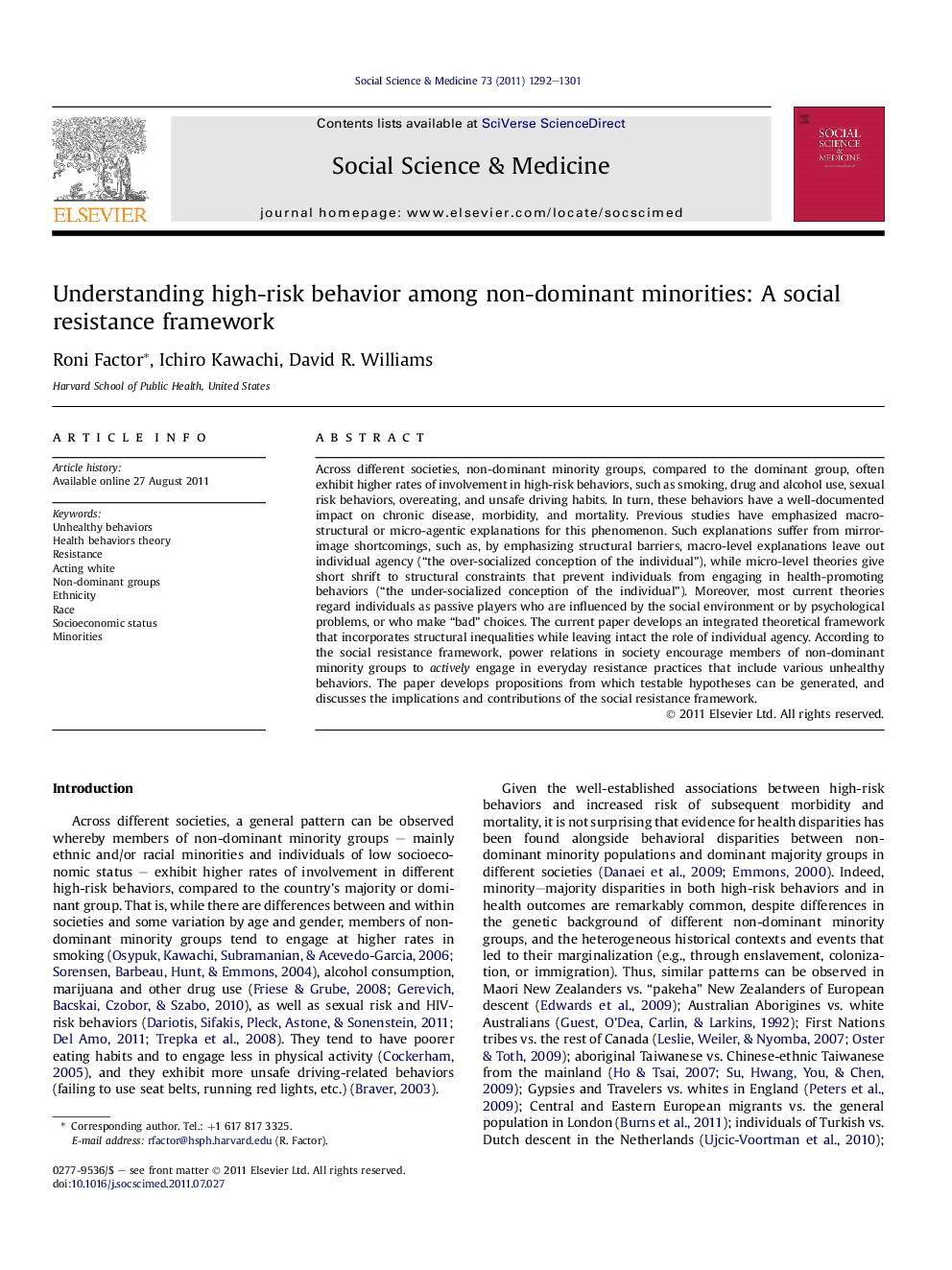| کد مقاله | کد نشریه | سال انتشار | مقاله انگلیسی | نسخه تمام متن |
|---|---|---|---|---|
| 952788 | 927540 | 2011 | 10 صفحه PDF | دانلود رایگان |

Across different societies, non-dominant minority groups, compared to the dominant group, often exhibit higher rates of involvement in high-risk behaviors, such as smoking, drug and alcohol use, sexual risk behaviors, overeating, and unsafe driving habits. In turn, these behaviors have a well-documented impact on chronic disease, morbidity, and mortality. Previous studies have emphasized macro-structural or micro-agentic explanations for this phenomenon. Such explanations suffer from mirror-image shortcomings, such as, by emphasizing structural barriers, macro-level explanations leave out individual agency (“the over-socialized conception of the individual”), while micro-level theories give short shrift to structural constraints that prevent individuals from engaging in health-promoting behaviors (“the under-socialized conception of the individual”). Moreover, most current theories regard individuals as passive players who are influenced by the social environment or by psychological problems, or who make “bad” choices. The current paper develops an integrated theoretical framework that incorporates structural inequalities while leaving intact the role of individual agency. According to the social resistance framework, power relations in society encourage members of non-dominant minority groups to actively engage in everyday resistance practices that include various unhealthy behaviors. The paper develops propositions from which testable hypotheses can be generated, and discusses the implications and contributions of the social resistance framework.
► Compared to the dominant group, non-dominant minority groups often engage at higher rates in various unhealthy behaviors.
► To better understand this phenomenon we develop a social resistance framework which integrates macro and micro factors.
► The framework sees members of non-dominant minorities as individuals who actively engage in everyday resistance practices.
► These practices include various unhealthy behaviors which are a reaction to social power relations.
► The paper develops ten hypotheses and discusses the implications of the social resistance framework.
Journal: Social Science & Medicine - Volume 73, Issue 9, November 2011, Pages 1292–1301